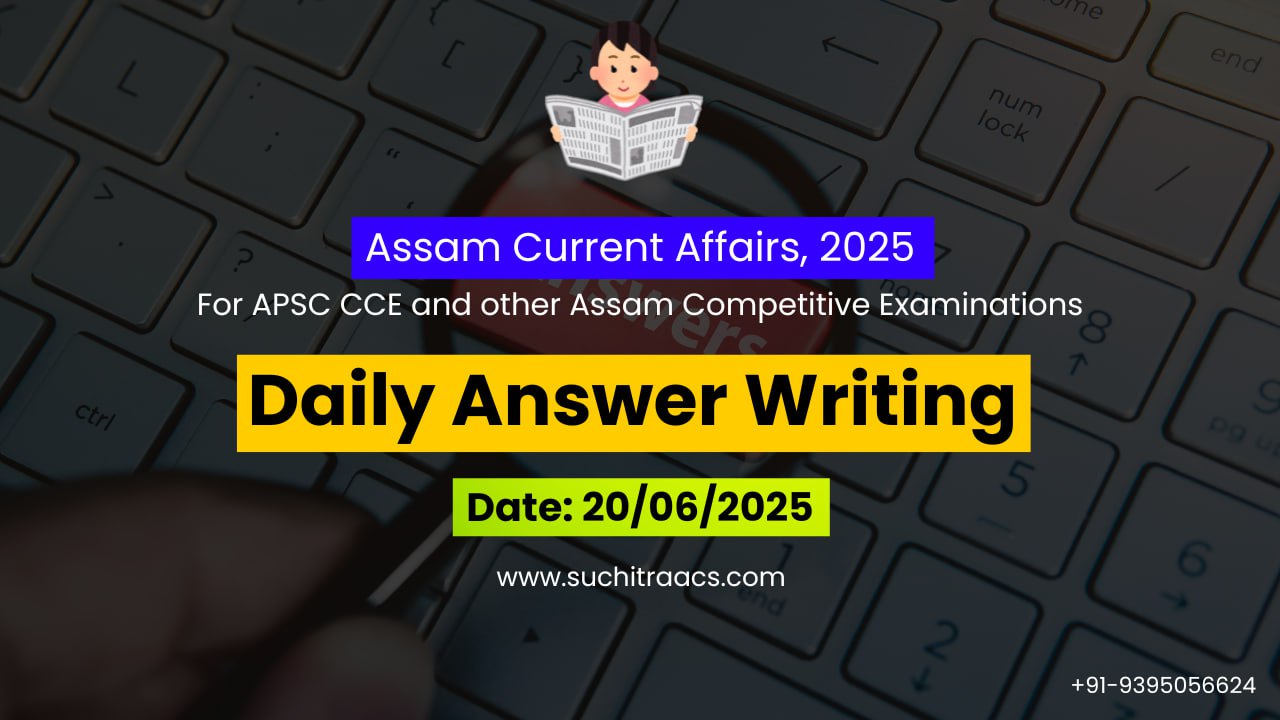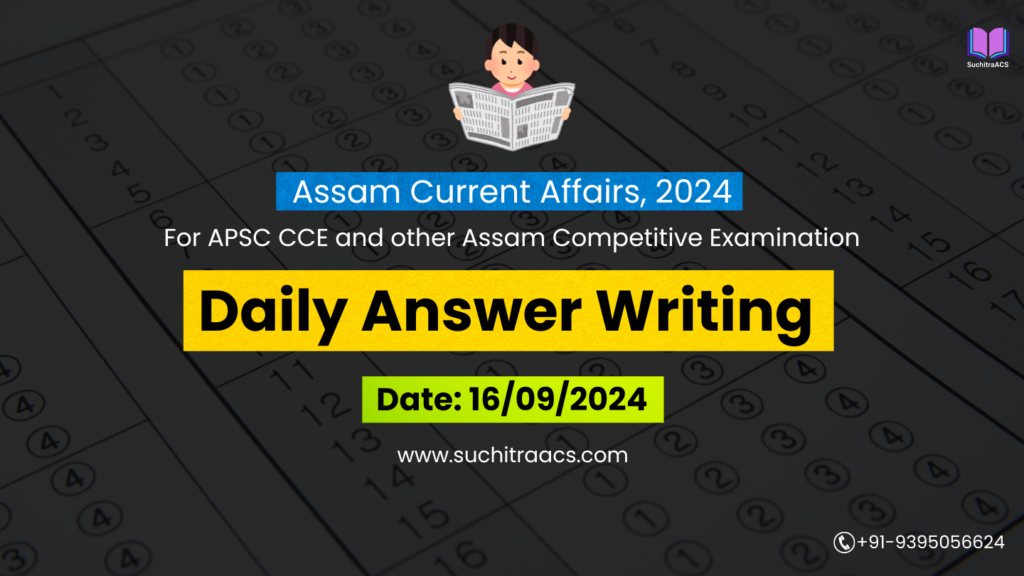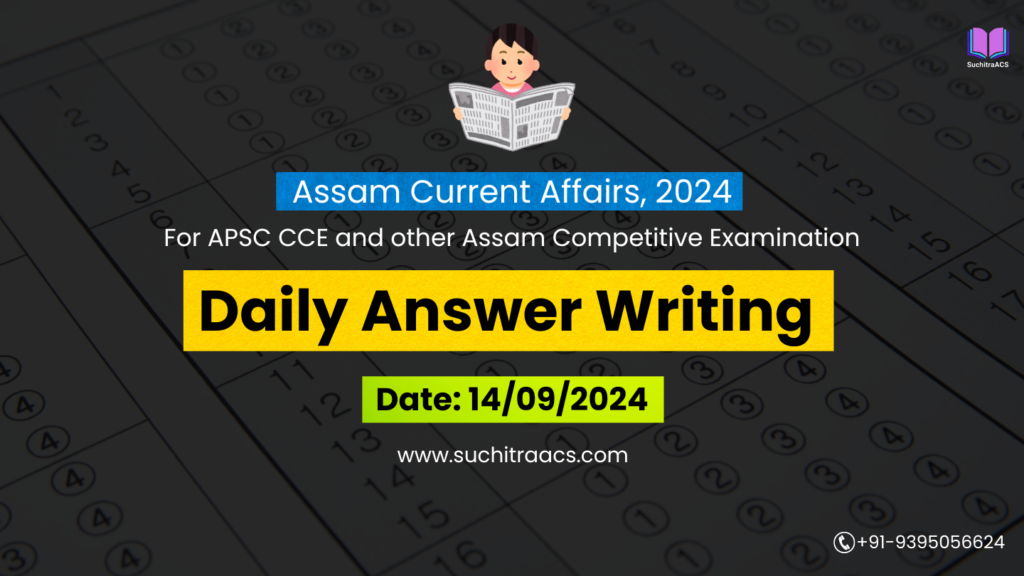APSC Answer Writing (Daily) based on Assam Tribune – 20/06/2025
For APSC CCE and other Assam Competitive examinations aspirants, practicing Daily Answer Writing is vital. This blog covers the most important Main question and its model Answer from the Assam Tribune today (20-06-2025).
📝 Mains Question:
Q. “Scientific tools like flood hazard zoning atlases can transform disaster management from reactive relief to proactive resilience.” Examine the role of space-based data in flood management in India with a special focus on Assam.
📘 Model Answer
Introduction
Floods are the most frequent and destructive natural disasters in India, affecting over 30 million people annually, with Assam among the worst-hit states. Traditionally reliant on post-flood relief, the state has now turned to scientific planning through space-based flood mapping. The recent Flood Hazard Zoning Atlas prepared by ISRO’s NRSC in collaboration with NDMA and ASDMA marks a crucial shift toward data-driven disaster preparedness.
Why Assam Needs Scientific Flood Management
- ~40% of Assam’s land is flood-prone
- 18 lakh hectares of cropland impacted annually
- Increasing flood frequency due to climate change and Brahmaputra siltation
- Lack of real-time early warning and long-term mitigation planning
Role of Space-Based Tools in Flood Management
| Tool or Application | Function |
| Satellite Mapping (IRS/INSAT) | Tracks flood extent, recurrence, and vulnerable zones |
| Digital Elevation Models (DEM) | Identifies low-lying areas for drainage planning |
| Flood Hazard Atlases | Classifies villages/districts by flood severity for zoning policies |
| Remote Sensing + GIS | Supports infrastructure planning (roads, embankments, shelters) |
| Cloud Cover & Rainfall Monitoring | Enables real-time flood alerts and crop advisory integration |
Benefits of the ISRO-Assam Flood Atlas
- Maps 18,000+ villages into 5 risk categories
- Covers flood data from 1998 to 2023, ensuring historical accuracy
- Enables prioritised funding and embankment work
- Helps reduce loss of life, livestock, and infrastructure
- Promotes climate-resilient agriculture through informed planning
Challenges in Integration
| Challenge | Explanation |
| Low Local Capacity | Panchayats and districts often lack GIS-trained officers |
| Coordination Deficit | Revenue, WR, and ASDMA departments work in silos |
| Funding Bottlenecks | Long-term flood mitigation projects often face delays |
| Encroachment on Floodplains | Weak land enforcement undermines hazard zoning |
| Data Accessibility | Scientific data often remains underutilised at grassroots level |
Way Forward
| Recommendation | Action Plan |
| Policy Integration | Make flood atlas part of district planning and MNREGA floodproofing |
| Digital Dashboards | Live flood data with public access for transparency and alerts |
| Capacity Building | Train local officials in reading satellite data and GIS tools |
| Community Engagement | Involve SHGs, youth, and schools in flood education |
| AI-Powered Forecasting | Integrate machine learning into rainfall-runoff models |
Conclusion
Space-based flood mapping is not just a scientific advancement—it is an equity tool for vulnerable regions like Assam. By enabling predictive governance, targeted resource allocation, and community resilience, such tools transform flood management from a humanitarian crisis to a solvable planning challenge. Science must flow into policy and reach the last mile to make this transformation real.
✨ Looking for top-quality APSC Mains Guidance with Personalised Mentor?

🔔 Join Our WhatsApp Study Group!
For exclusive access to premium quality content, including study materials, current affairs, MCQs, and model answers for APSC CCE and other Assam competitive exams.
Click here to join: SuchitraACS Study WhatsApp Group
📚 Want to know more about SuchitraACS’s most affordable courses?
Click here to know more: SuchitraACS Courses for APSC CCE and Assam Competitive Examinations




